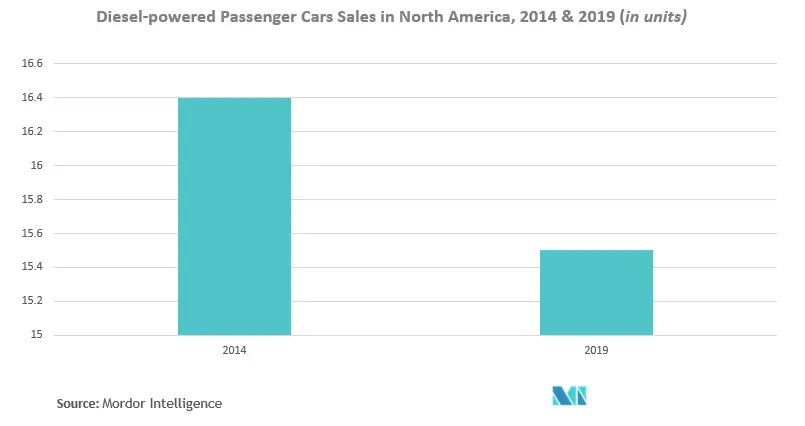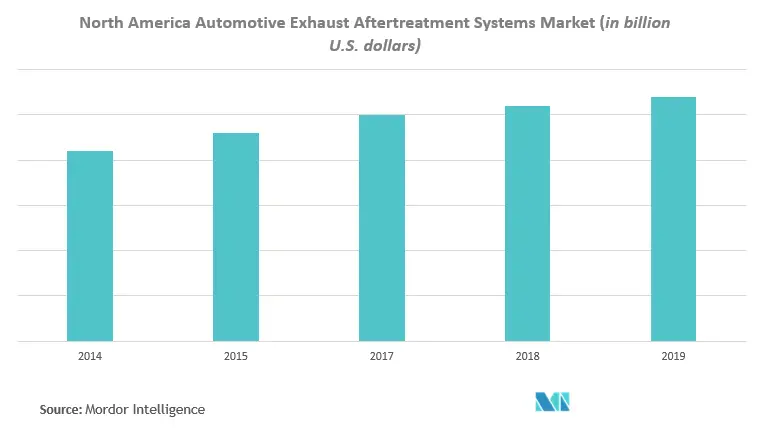Market Trends of North America Automotive Exhaust Aftertreatment Systems Industry
This section covers the major market trends shaping the North America Automotive Exhaust Aftertreatment Systems Market according to our research experts:
Diesel Particulate Filters (DPFs) is the Fastest Growing Technology by Filter Type
Diesel particulate filters (DPFs) are proven technologies to meet light-duty PM control needs. Exhaust Aftertreatment Systems engineers work hand in hand with OEM manufacturers to develop emissions control systems that enable both gasoline and diesel-powered engines to provide cost-effective solutions while also mandating emissions level regulation set by the government.
Compared to gasoline, diesel engines have much higher efficiency and durability to operate with its low operating cost. However, diesel engines are also one of the most significant contributors to harmful exhaust emissions causing environmental pollution. In 2018, diesel's market share fell from 44.0% to 35.9%, while the petrol market share grew from 50.3% to 56.7% since 2017. With technologies such as Particulate control, compound control, NOX control system, and newer exhaust system that features an air gap pipe, it is designed to work together with other components, provide superior thermal efficiency and improve fuel economy.
The Diesel Particulate Filter (DPF) provides an effective solution in which an advanced modular design allows easy cleaning and engine vehicle are servicing every 200,000 miles. Technologies such as the ash modeling particulate Computer-Aided Engineering and computational fluid dynamics help design a better DPF system. Also, such an advanced design allows technicians to remove the DPF from any vehicle in less than 15 minutes.

The United States is Imposing Stringent Emission Regulations on Diesel Automakers
Driven by growing concerns on deteriorating air quality, various government policies have been implemented to reduce the effects of diesel engine emissions on human health and the environment. Across the globe, drastic measures are being taken to adopt and enforce tighter vehicular emission regulations. The main aim is to minimize unburned hydrocarbons, nitrogen oxides (NOx), and particulate matter (PM).
In the US, vehicles sold by the manufacturers must meet Tier 2 Bin 5 level emissions targets; thus, the sale of cars with emissions higher than Bin 5 levels must be offset by the sale of vehicles with correspondingly lower emissions levels than Bin 5.
Performance targets for low-temperature aftertreatment modeling R&D include Catalyzed NOx reduction, Catalytic HC, NO, and CO oxidation, Passive storage of NOx, HC, and CO, Soot filter regeneration, Fuel effects on the above (e.g., alternative and renewable fuels) and Integrated catalyst architectures (e.g., layered or segmented catalysts).
USA and Canada have advanced regulations which focus on limiting the pollutant. With improved technology and awareness, the intensity to limit global warming and reduce fossil fuel use in the transportation sectors on the rise. Several North American nations have pledged to carbon dioxide emissions and impose Carbon tax criteria for greenhouse gases and pollutants emission automotive carmakers. All the above is leading to the rapid adoption of advanced aftertreatment technologies.

